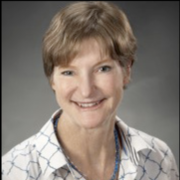For Preceptors
Matches are made in the spring and programs are two (2) to four (4) weeks between May and August.
You can lead the future of primary care in Texas by serving as a GIMSPP preceptor (mentor). Physician preceptors use the Teaching Medicine – In Action: A Guide for GIMSPP to deliver personalized instruction in a local, community-based setting to an early career medical student. This training helps students build a formative understanding of the practice of primary care and encourages them to pursue the practice post-graduation. Rekindle your passion for medicine and give back to the medical profession at the same time.
Eligibility Requirements:
- Preceptor must be board certified in internal medicine with a current Texas medical license.
- Preceptors must practice at least 40% as a general internist apart from any other sub-specialties.
- Preceptors are expected to provide daily, personal instruction and supervision to a medical student.
- Preceptor time commitment ranges from two (2) to four (4) weeks during the summer.
Resources for Preceptors:
- Preceptor Availability Form
- Teaching Medicine in Action: A Guide for GIMSPP Preceptors
- Post Program Evaluation
Our valued GIMSPP volunteer preceptors will receive the following incentives:
- Free registration to the Annual Meeting of the American College of Physicians – Texas Chapter (TXACP)
- A copy of ACP’s Teaching Medicine Book Series
Frequently Asked Questions
If I apply, am I committed to taking a student?
No. Filling out an application simply puts your name in our database as a possible option for the two-to-four week rotations occurring during the summer each year. TXACP will contact you to see if a student’s request matches with your schedule. Matching occurs March – July.
What are medical students allowed to do while precepting?
It depends on you, your practice, and your student. Please keep in mind that these are first and second year medical students, but you can have them do things such as interview patients, take complete histories, vitals, and more. Please use your best judgement based on their level of training and experience.
How do I know if I am eligible to precept?
Eligibility Requirements:
- Internists must be board certified in internal medicine with a current Texas medical license.
- Internists must practice at least 40% as a general internist apart from any other subspecialties.
- Internists are expected to provide daily, personal instruction and supervision to a medical student.
- Internists time commitment ranges from 2-4 weeks during the summer.
Will I receive financial compensation for my time?
No, you will not receive any monetary compensation
Is there a lot of extra paperwork?
No preceptors are only required to fill out the student evaluation online at the end of the rotation
What if I have accepted a student and my schedule changes?
Make sure your notify the GIMSPP Program Manager, Alyssa Muckelroy, as soon as possible so that other arrangements can be made.
Will having a student in my office take extra time?
Yes. Medical education literature suggests that a physician’s day is lengthened by 20-60 minutes at the beginning of your teaching rotation. This time will be reduced once you are more comfortable with instructing your medical student.
What if I am out of the office while the student is rotating with me?
The student may spend time with another physician, but you are responsible for spending the bulk of the instruction time with the student. However, you remain responsible for the student evaluation.
Can the student work with another physician in the practice?
Yes, but the bulk of the instruction and rotation time should be spent with the assigned preceptor.
How are the medical students insured?
GIMSPP does their best to match students within known affiliation agreements, which covers students under the medical school's liability insurance. If the students are not covered by their school's insurance, the students are responsible for any additional insurance necessary for their rotation. GIMSPP does not provide insurance, guarantee any level of coverage, nor are we affiliated with any providers.
Will I be responsible for the student housing and accommodations?
No, but if you know of available housing options please let the GIMSPP staff know so they may communicate the options to the students.
Testimonials
GIMSPP Interviews and News
Mentor Mondays
Follow the action with #MentorMondays. On the first Monday of each month, TXACP’s social media accounts feature a GIMSPP physician preceptor with a personalized look at how they conducted the program for their medical student mentee(s).
Follow The Texas Chapter of the ACP's GIMSPP on Facebook and Twitter
An Interview with: DR. AARON SAMSULA
 TEXAS ACP Member, Former GIMSPP Student and GIMSPP Preceptor
TEXAS ACP Member, Former GIMSPP Student and GIMSPP Preceptor
Why did you join GIMSPP?
"I think I was drawn to Internal Medicine because as a student the Internists seemed like the smartest people in the hospital. There were several situations where complicated patients were puzzles to solve and the Internists were called to piece things together and look at the big picture. As I was exposed to more specialties and it came time to choose a career path I was also drawn to the flexibility of Internal Medicine. After an IM residency, you can care for both inpatients and outpatients, giving you the option to be a Hospitalist or have an Outpatient practice - or do both. You can practice in any setting - rural or urban. You can stay in an academic center, being involved in a teaching program, or practice in a private setting. You can tailor your practice to taking care of young adults or geriatric patients. I also liked the option to further specialize within Internal Medicine if I later decided I would rather practice Cardiology, Endocrinology, Rheumatology, etc.”
Describe your experience with GIMSPP.
“I first learned about the GIMSPP program as a first year medical student, in 1998, and signed up to do a rotation the following summer. I spent a full month at my preceptor's clinic in Pasadena, Texas. I was excited about it being driving distance from my home. I also really enjoyed the experience and got a good feel for what it is like to be an outpatient internist in the community. Since Internal Medicine can be practiced in so many different ways, it was great to experience it in a non-academic setting and be exposed to the unique challenges seen in a community clinic. It was a real breath of fresh air coming after the rigorous first year of medical school, consisting mostly of classes, studying, and tests. GIMSPP reminded me why I wanted to go through all of this training - because I wanted to take care of patients. I had started to lose sight of that being buried in books for a year.”
Why are you currently a GIMSPP Preceptor?
“As soon as I was established in my own practice, I signed up to be a preceptor myself. I wanted to give students an experience similar to the one I had had. I wanted to show them how I had chosen to practice. I continue to sign-up to do this every year and truly enjoy it every time. It is refreshing and rejuvenating for me to have a student every summer. I sometimes get lost in the day to day stresses of seeing patients and running my practice, and I find this gives me perspective to work with a student. As I am explaining to a student why I practice the way I do, why I chose Internal Medicine, I am also reminding myself that I am doing exactly what I want to do - taking care of patients. What I hope the student gains from this is an appreciation for Internal Medicine and flexibility of its practice. I want the student to be exposed to something that is not a part of their typical training. It is great if they want to eventually be an Internist, but I think after working with me they should realize that, at least, they want to be cared for by an Internist."
An Interview with: DR. SUSAN ANDREW
 Texas ACP Member, Current GIMSPP Preceptor and GIMSPP Decade of Service Awardee
Texas ACP Member, Current GIMSPP Preceptor and GIMSPP Decade of Service Awardee
Why did you pursue a career in medicine?
"My father was a family physician and loved medicine. I had grown up listening to him recount “great cases” and talk about his experiences as a physician. However, I never considered medicine as a career path for me until I had my first job out of college. I worked as a laboratory technician under Dr. Carol Reinisch at Sidney Farber Cancer Institute in Boston. There was a physician in the lab doing research who would moonlight in the Boston Children’s Hospital emergency department. He took another lab technician who was interested in becoming a doctor and myself to shadow him in the emergency department. There were a number of patients that he saw with a variety of problems; one patient needed a lumbar puncture and another needed stitches. I loved the experience and subsequently applied to and was accepted at medical school as well as graduate school. I loved medicine, but I also loved research. Dr. Reinisch gave me wonderful words of advice by saying that I could do research as a physician and becoming a physician would give me more options in the future.”
What drew you to the practice of primary care?
“I chose to go into internal medicine because of the internists I met and the experiences I had during medical school. The internists were all extremely bright, and the complexity of the patients were intellectually stimulating.”
Why do you prefer practicing internal medicine?
“As far as what is unique about internal medicine versus other specialties - it has to do with the complexity of the patient as well as the patient being able to give you feedback. The patients will open themselves up to me as a physician. I get history from them that includes much more than just their physical condition; I can share and have shared in many aspects of their lives. Trying to decipher what medical problem a patient has and how best to treat the problem holds my interest to this day.”
Why did you join GIMSPP?
“I signed up to serve as a GIMSPP preceptor the first year that I knew about it about 20 years ago. The physicians who were involved in the organization were excellent role models and I followed their lead.”
Do you have any tips for students?
“Even if the student has an idea that they might want to sub-specialize or possibly go into something other than Internal Medicine, they can have a worthwhile experience wherever and with whomever they get placed in GIMSPP. The student should take advantage of the clinical experience to the fullest extent that they can. The system for medical care is important for the student to know about as well as the clinical aspects. Not only shadow the physician, talk to the staff and shadow them as well. If in an office, see what the people who answer the phone do. If in the hospital, observe not only the physician, but also the nurses and floor staff.”
What can students expect to accomplish?
“For the students, I hope they gain confidence in being able to interact with patients, families and staff. I hope that they feel comfortable with getting a history, doing a physical exam, coming up with a differential diagnosis and plan and then presenting the patient’s case. I hope the students will learn how to research medical problems and treatments. Since it might not be another year before further clinical experiences, I hope the students have had a sufficient clinical exposure ‘to keep them going.’”

